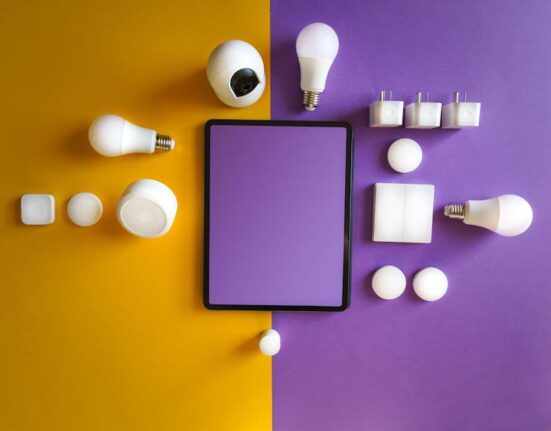In our increasingly connected world, voice assistants like Amazon’s Alexa and Google Assistant have seamlessly woven themselves into the fabric of our daily lives. From managing schedules and answering trivia to controlling smart home devices, these digital companions promise convenience at our fingertips. Yet, beneath this veneer of helpfulness lies a question that looms large in the minds of many: how much are these devices truly listening? As we invite these technologies into our homes and lives, the critical conversation about privacy emerges. What data do they gather, and how is it used? In this article, we delve into the fascinating—and often unsettling—realm of voice assistant privacy, unraveling the intricacies of what Alexa and Google are really privy to while we go about our routines. Join us as we explore the balance between convenience and confidentiality, shedding light on the unseen conversations that shape our experiences with these smart devices.
Understanding Voice Assistants’ Listening Habits
Voice assistants like Alexa and Google Home are designed to be convenient, but their listening capabilities can raise privacy concerns. These devices are always ready to respond, constantly listening for their wake word, which makes it essential to understand what this actually entails. When a voice assistant detects a wake word, it begins recording and transmitting your voice to the cloud for processing. However, it’s important to note that these devices do not continuously record every conversation; they activate only upon recognizing the designated trigger phrase. This means they are in a standby mode, where audio snippets of your conversations might accidentally be sent, sometimes leading to unintended outcomes.
In practice, voice assistants can pick up a variety of sounds and conversations beyond your explicit commands, leading to a nuanced understanding of their “listening habits.” Here are some key points to keep in mind:
- Ambient Noise Sensitivity: Voice assistants may be sensitive to background noises, which can inadvertently lead to privacy violations.
- Data Retention Policies: Both Amazon and Google retain recordings to improve their services, leading to questions about user control over their data.
- User Settings: Users often have the option to manage their privacy settings, including reviewing and deleting voice recordings.
The table below illustrates the basic privacy settings and data retention differences between Alexa and Google:
| Feature | Amazon Alexa | Google Assistant |
|---|---|---|
| Data Retention Period | Indefinitely, until deleted by the user | 18 months by default, can be adjusted |
| Voice Recording Access | Via Alexa app | Through Google Account settings |
| Privacy Control Features | Mute button and voice command for deletion | Voice command for deletion and auto-delete settings |

The Data Behind Your Conversations: What Alexa and Google Collect
When using voice-activated assistants like Alexa and Google Assistant, it’s essential to understand the types of data these services collect during your interactions. Both platforms continually gather information to improve user experience and provide personalized responses. The data collected typically includes:
- Voice recordings: Captured during interactions, these recordings help refine speech recognition and language processing.
- Search queries: The questions and commands you issue provide insights into your preferences and frequently sought information.
- Device data: Information about your device, including its location, can be utilized to enhance contextual results.
In addition to this, both platforms share common practices related to user data management. For example:
| Data Type | Alexa | |
|---|---|---|
| Retention Period | Typically 180 days | Depends on user settings |
| Opt-out options | Voice commands or app settings | App settings and account choices |
| Anonymous Usage Data | Aggregated and anonymized | Used for product improvement |
Understanding this data collection not only empowers users to make informed decisions about their privacy settings but also highlights the sophisticated technology evolving behind everyday conversations with AI. Both Alexa and Google prioritize user experience while adhering to privacy protocols; however, it’s prudent to regularly audit and adjust your settings to match your comfort level with data sharing.

Protecting Your Privacy: Best Practices for Smart Speaker Use
To ensure a safer smart speaker experience, you should regularly review your privacy settings. Both Alexa and Google offer options for users to manage their voice recordings. Start by accessing the respective apps and navigating to the privacy settings. Here are some key practices to consider:
- Disable voice recordings: Turn off the feature that allows your device to save and analyze voice recordings.
- Review past interactions: Periodically check your voice history and delete any recordings that you don’t want stored.
- Mute when not in use: Use the physical mute button or command to silence your device when you don’t need it to listen.
- Limit third-party skills or apps: Be cautious when enabling additional skills that might access your voice data.
Understanding what information your smart speakers collect is critical. Being proactive about your privacy can make a significant difference. Here’s a simple comparison of data collection practices from Alexa and Google Assistant:
| Feature | Amazon Alexa | Google Assistant |
|---|---|---|
| Default Voice Recording | Enabled | Enabled |
| Access to Contacts | Optional | Optional |
| Data Sharing with Third-Party Apps | Yes | Yes |
| Review Past Interactions | Yes | Yes |

Navigating the Future: Evolving Voice Assistant Technologies and User Control
The landscape of voice assistant technologies is rapidly shifting, as innovations propel platforms like Alexa and Google Home into roles that extend far beyond mere convenience. Users are increasingly aware of how their voice data is processed, leading to a demand for greater transparency and control over their personal information. This evolution is prompting companies to re-assess their data handling protocols, pushing for improvements in user privacy settings. Some critical features empowering users include:
- Voice Activity Alerts: Notifications that inform users when their device is actively listening.
- Data Deletion Options: Easy mechanisms to delete voice recordings and associated data.
- Custom Commands: Features that allow users to tailor responses based on their individual preferences.
As developers enhance these capabilities, machine learning continues to refine the accuracy of voice recognition systems. User preferences and control mechanisms are likely to shape the future of these technologies. Privacy concerns have prompted initiatives that include:
| Feature | Description |
|---|---|
| Privacy Mode | Temporary state where the device does not listen unless activated. |
| Transparency Reports | Regular disclosures detailing data usage and access logs. |
| User Profiles | Distinct profiles that can customize interactions according to individual user needs. |
Insights and Conclusions
As we conclude our exploration into the intricate world of voice assistant privacy, it becomes clear that the dialogue around devices like Alexa and Google Assistant is far from straightforward. While these technologies promise convenience and seamless integration into our daily routines, they also invite a wealth of questions about the boundaries of privacy and the extent of our digital footprints. Understanding what happens behind the scenes—what is being recorded, stored, and analyzed—empowers us as users to make informed choices.
Ultimately, the future of voice assistants hinges on a delicate balance between innovation and privacy. As we integrate these tools into our lives, let’s remain vigilant and proactive, advocating for transparency and the ethical use of our data. The more we understand about what our devices are really listening to, the better equipped we are to navigate this evolving landscape, ensuring that our digital assistance serves us on our terms. In the end, dialogue is key—between us and the technology we bring into our homes, shaping a future where convenience and privacy coexist in harmony.














Leave feedback about this